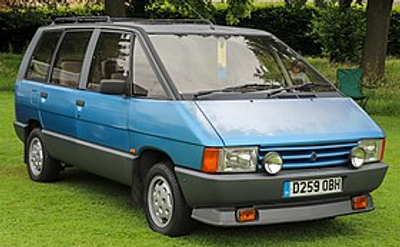Renault Espace Generation 1 (Facelift 1988)
Introduction
The Renault Espace Generation 1, with its facelift in 1988, marked a significant milestone in the history of minivans. The Espace, first introduced in 1984, was already a popular family car, but the facelift added a touch of modernity and refinement. This futuristic-looking vehicle offered a spacious interior, advanced features, and impressive aesthetics that set it apart from its competitors.
Design and Exterior Features
With the facelift in 1988, the Renault Espace underwent significant changes in its design. The front end was restyled with new headlights, a revised grille, and a sleeker bumper. The rear lights were also updated to match the new front design. These changes gave the Espace a more contemporary and aerodynamic look, making it stand out on the road.
Moreover, the Generation 1 facelifted model featured larger windows that provided improved visibility for the driver and passengers. The car's body was made of lightweight material, enhancing fuel efficiency and maneuverability. Overall, the design changes not only enhanced the Espace's aesthetics but also improved its functionality.
Interior and Comfort
The Renault Espace Generation 1 boasted an incredibly spacious and versatile interior. It could comfortably accommodate up to seven passengers, making it a perfect choice for families or large groups. The seating arrangement was flexible, allowing the seats to be adjusted or removed to create extra space for luggage or other cargo.
In terms of comfort, the Generation 1 facelifted model offered a range of features that ensured an enjoyable ride. The seats were upholstered with high-quality materials, providing excellent support and comfort. The cabin was well-insulated, minimizing exterior noise and vibrations. Additionally, the car had air conditioning, power windows, and a sound system, adding to the overall convenience and luxury of the driving experience.
Performance and Technology
Under the hood, the Renault Espace Generation 1 (facelift 1988) came with a range of engine options. These included petrol and diesel engines, providing drivers with different power choices. The engines were known for their reliability and efficiency, making the Espace a practical and economical choice.
In terms of technology, the Generation 1 facelifted model introduced several advanced features for its time. It had power steering, ensuring effortless maneuverability. The car also featured anti-lock braking system (ABS) technology, which enhanced safety by preventing the wheels from locking during sudden braking. These technological advancements set the Espace apart from its competitors and further solidified its position as a leader in the minivan segment.
Legacy and Impact
The Renault Espace Generation 1 (facelift 1988) played a crucial role in the evolution of minivans. Its innovative design, spacious interior, and advanced features set new standards for what a family car could be. The Espace became a symbol of practicality and versatility, and its success paved the way for future generations of minivans.
The Generation 1 facelifted model brought Renault significant commercial success and earned accolades from both customers and the automotive industry. It became a popular choice among families and businesses alike, thanks to its combination of comfort, reliability, and stylish design.
Conclusion
The Renault Espace Generation 1 (facelift 1988) revolutionized the world of minivans with its futuristic design and advanced features. Its spacious interior, comfortable seating, and flexible arrangement made it a practical choice for families and larger groups. The car's performance and technological advancements further solidified its reputation as a leader in the minivan segment.
The Generation 1 facelifted model's impact on the automotive industry cannot be overstated. Its success paved the way for subsequent generations of minivans and set new standards for comfort and practicality. Even today, the Renault Espace Generation 1 remains an iconic and influential car model.


